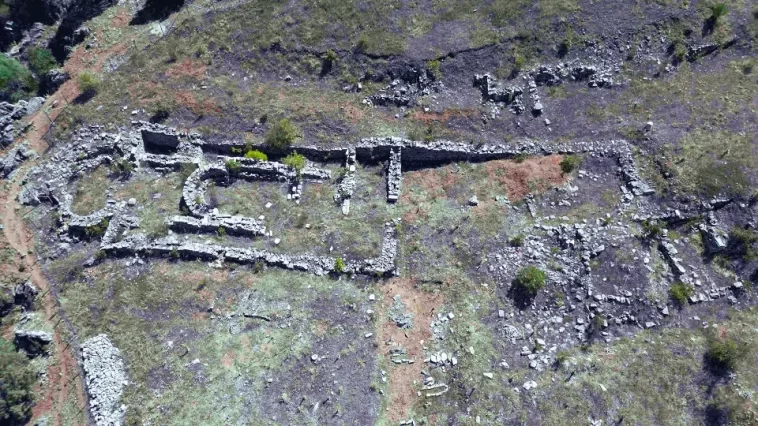A remarkable archaeological site in Turkey’s southern province of Isparta is offering fresh insights into the religious and social traditions of the Byzantine Empire. Nestled in the Aksu district, directly across from the famous Zindan Cave, the ruins of a centuries-old monastery complex are shedding light on how rural communities lived, worshipped, and worked more than 1,500 years ago.
The structure, though partially in ruins today, preserves traces of daily life that bridge both spiritual devotion and economic production. At the heart of the complex lies a basilica-style church, distinguished by its elongated rectangular form, which once served as the central hub of monastic life. Researchers believe the building was constructed in the late fifth century A.D., marking it as an early example of Christian monastic architecture in Anatolia.
More Than a Place of Worship
According to İbrahim Acuce, a research assistant in the Department of Archaeology at Süleyman Demirel University, the site was not solely dedicated to prayer. Surrounding the church were workshops where monks carried out essential tasks such as blacksmithing and winemaking. Archaeological findings show wine presses, blacksmith forges, and monastic cells, proving that this was not only a spiritual center but also a self-sustaining rural community.
“The existence of wine presses and workshops clearly demonstrates that the monastery was designed for both religious and economic purposes,” Acuce explained. “Even after suffering damage from a devastating fire, the site was never completely abandoned. Instead, a smaller chapel was constructed inside the main church’s naos, allowing local communities to continue worship in a more intimate setting.”
Artistic and Architectural Significance
The site also preserves traces of late-period frescoes, decorated with religious figures and biblical scenes. These frescoes indicate that the monastery maintained its sacred role for many centuries, adapting to new uses over time.
One of the most striking features is the church’s triconch apse—a rare clover-shaped architectural design that highlights the uniqueness of Early Christian architecture in Anatolia. Trial excavations conducted between 2002 and 2021 confirmed the site’s sacred significance throughout multiple phases of Byzantine history.
A Window Into Byzantine Rural Life
For historians, this monastery provides invaluable evidence of how monastic communities in rural areas of the Byzantine Empire organized their lives. Unlike urban churches in Constantinople or major coastal cities, this site reflects the reality of smaller, self-sufficient communities that balanced worship with practical daily labor.
The combination of worship, seclusion, artistic expression, and production makes this Isparta monastery a rare archaeological treasure. It not only deepens our understanding of Byzantine spirituality but also illustrates the intertwined relationship between faith and economy during Late Antiquity.
As excavations and conservation efforts continue, scholars hope the monastery will attract greater attention from both historians and cultural travelers, offering a unique glimpse into the everyday life of Byzantine monks in the Anatolian countryside.

